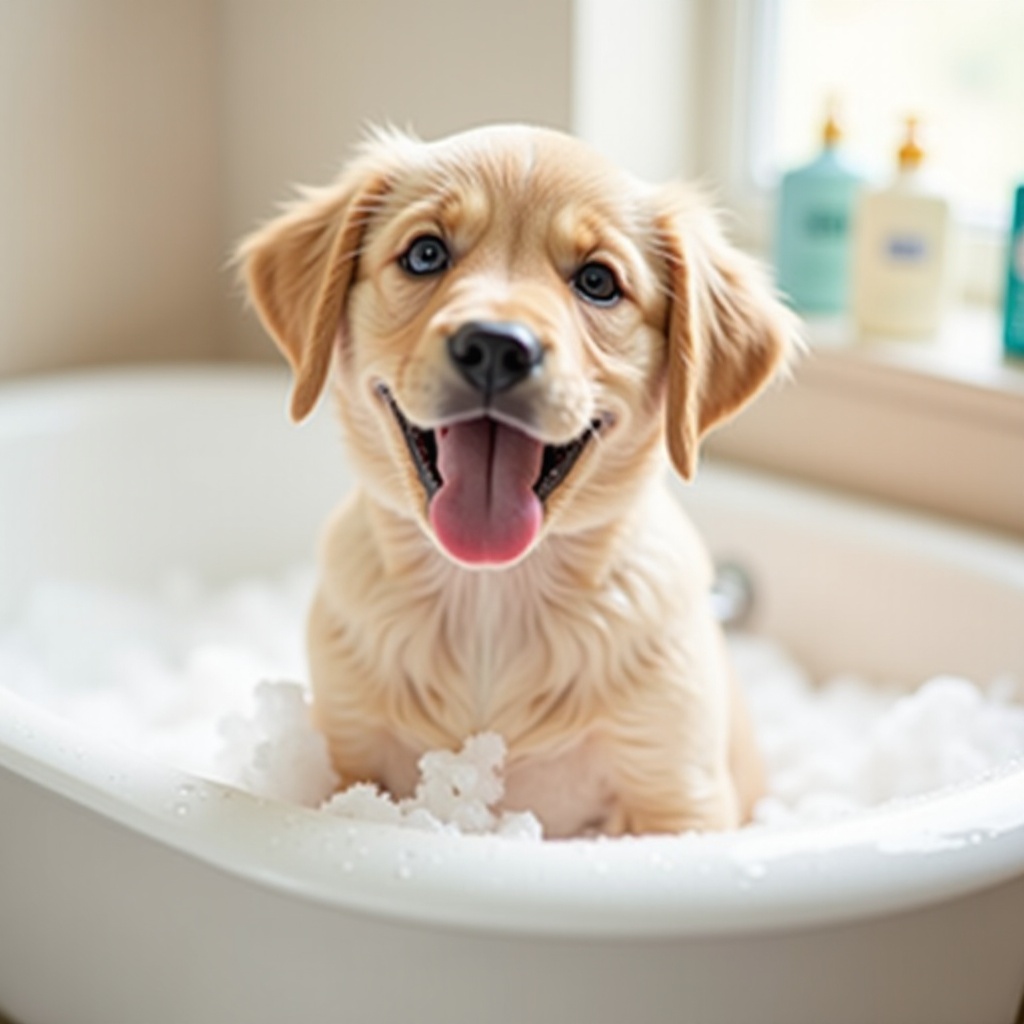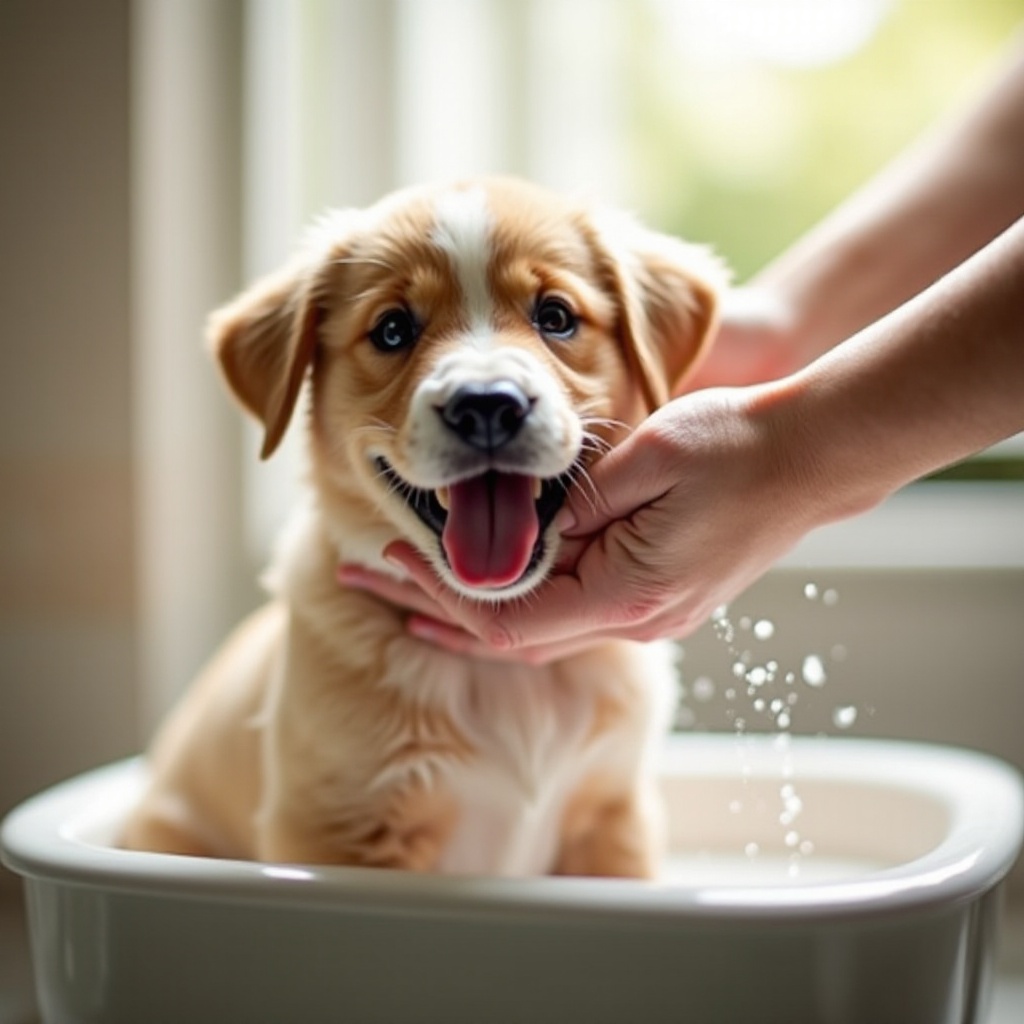Introduction
Bathing your puppy is an essential part of their hygiene and health care. Ensuring they are clean not only keeps them smelling good but also prevents potential skin issues. This guide will walk you through everything you need to know about what to bathe a puppy with, including the right products, the step-by-step bathing process, and tips for making bath time a positive experience.
Regular bathing is crucial for maintaining your puppy’s skin and coat health. Puppies are naturally curious and often get dirty quickly from playing and exploring. Bathing removes dirt, loose hair, and other contaminants that can cause skin problems and infections. Furthermore, regular baths help you spot any unusual changes in your puppy’s skin, such as rashes or parasites, allowing for early intervention.
Starting early with a grooming routine helps your puppy get accustomed to the process, making future baths less stressful for both of you. Knowing what to bathe a puppy with and maintaining consistency is key to fostering a positive bath time experience.

Choosing the Right Bathing Products
Properly selecting bathing products is vital for your puppy’s health and well-being. Using the wrong products can cause irritation or allergic reactions.
Puppy-Specific Shampoos
Always opt for shampoos that are specifically formulated for puppies. These products are designed to be gentle on their delicate skin, contain milder cleansers, and often include ingredients that soothe and condition the skin. Look for shampoos that clearly state they’re suitable for puppies and are free from harsh chemicals.
Avoiding Human Products
Never use human shampoos on your puppy. Human hair and skin have different pH levels and sensitivities compared to dogs. Using human products on your puppy can disrupt their skin’s natural balance, leading to dryness, irritation, or even skin infections.
Natural vs. Commercial Shampoos
Choosing between natural and commercial shampoos largely depends on personal preference and your puppy’s specific needs. Natural shampoos typically have fewer chemicals and more organic ingredients, making them ideal for puppies with sensitive skin. However, commercial shampoos often provide additional benefits, like flea and tick control, and may be easier to find.

Preparing for the Bath
A successful puppy bath starts with proper preparation. Ensuring you have everything ready can help make the process smooth for you and less stressful for your puppy.
Setting Up a Safe Bathing Area
Choose a location where your puppy feels secure. This could be a sink, a bathtub, or even a small kiddie pool. Ensure the area is free from hazards, and consider placing a non-slip mat in the bottom to prevent your puppy from slipping.
Necessary Tools and Supplies
Gather all your bathing supplies before bringing your puppy to the bath area. You will need:
– A puppy-specific shampoo
– A cup or a detachable shower head for rinsing
– A soft brush
– Towels
– A hairdryer (optional)
– Cotton balls (to keep water out of your puppy’s ears)
Bathing Your Puppy: Step-by-Step
With everything prepared, you’re ready to start bathing your puppy. Following these steps will help you ensure a thorough and gentle bath.
Brushing Before the Bath
Before getting your puppy wet, brush their coat to remove loose fur and tangles. This helps the shampoo reach the skin evenly and makes rinsing easier.
Water Temperature and Depth
Fill the bath area with warm water, ensuring it’s not too hot or too cold. The water depth should be shallow, just enough to reach your puppy’s knees. This helps prevent discomfort and fear.
Applying Shampoo Correctly
Wet your puppy thoroughly with the warm water. Apply a small amount of puppy shampoo to your hands, then lather it gently into your puppy’s coat, starting from the neck and moving down to the tail. Be careful to avoid their eyes, ears, and mouth.
Rinsing Thoroughly
After applying the shampoo, use a cup or a detachable shower head to rinse your puppy completely. Make sure no shampoo residue remains, as leftover shampoo can irritate your puppy’s skin.

After the Bath: Proper Care
Post-bath care is just as important as the bathing process itself. Ensuring your puppy is dried properly helps maintain their comfort and keeps them warm.
Towel Drying Methods
Once the bath is over, gently lift your puppy from the bath and wrap them in a clean towel. Use the towel to pat them dry, being gentle yet thorough to remove as much moisture as possible.
Using a Hair Dryer (if applicable)
If your puppy tolerates it, you can use a hairdryer on a cool or low setting to help speed up the drying process. Make sure to keep the dryer at a safe distance to avoid overheating or burning their skin.
Brushing Again
After your puppy is mostly dry, brush their coat again to remove any remaining loose fur and to keep their coat looking neat and shiny.
Common Mistakes to Avoid
Even with the best intentions, it’s easy to make mistakes when bathing your puppy. Here are some common pitfalls to steer clear of:
Bathing Too Often
Bathing your puppy too frequently can strip their coat of natural oils, leading to dry skin and coat issues. Generally, bathing once a month is sufficient unless your puppy gets particularly dirty.
Incorrect Water Temperature
Always check the water temperature before bathing your puppy. Water that is too hot or too cold can cause discomfort and make bath time an unpleasant experience.
Not Rinsing Shampoo Properly
Ensure all shampoo is thoroughly rinsed from your puppy’s coat. Any residue left behind can lead to itching, irritation, and potential skin problems.
Tips for a Positive Bathing Experience
Creating a positive bath time experience encourages your puppy to be more cooperative and less fearful during future baths.
Gradual Introduction to Water
Start by slowly introducing your puppy to water. Let them play with a little bit of water before attempting a full bath. This helps them get used to the sensation and sounds.
Consistent Bathing Routine
Maintaining a consistent bathing routine helps your puppy know what to expect. Consistency can reduce anxiety and make the process smoother.
Using Treats and Praise
Reward your puppy with treats and praise during and after the bath. Positive reinforcement creates a pleasant association with bath time, making them more likely to cooperate in the future.
Conclusion
Bathing your puppy doesn’t have to be a daunting task. By choosing the right products, preparing adequately, and following a methodical approach, you can ensure your puppy stays clean and healthy. Remember, patience and positivity can turn bath time into a bonding experience for you and your furry friend.
Frequently Asked Questions
How Often Should I Bathe My Puppy?
Typically, bathing once a month is sufficient. However, this can vary based on your puppy’s breed, activity level, and specific needs.
What If My Puppy Is Scared of Water?
Gradually introduce them to water and use positive reinforcement. Start with small amounts of water and praise them continually.
Can I Use Human Shampoo on My Puppy?
No, human shampoo is not suitable for puppies as it can cause skin irritation and disrupt their natural pH balance.
